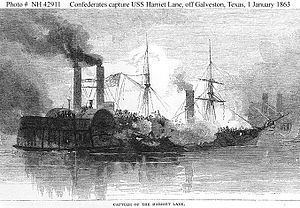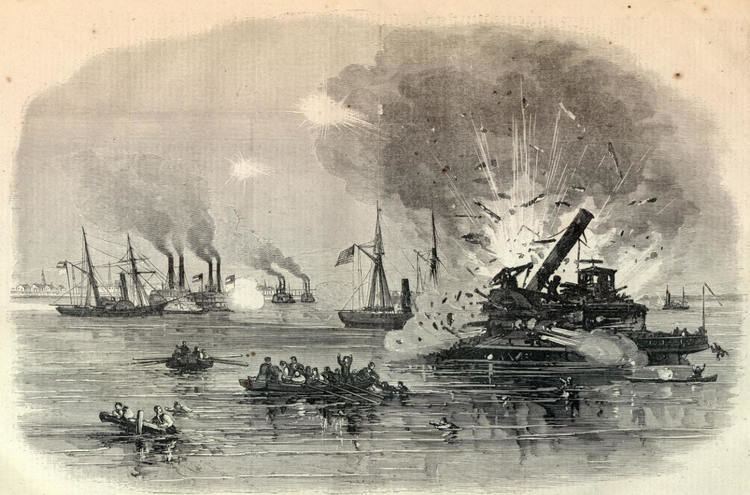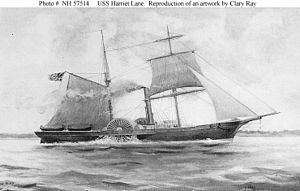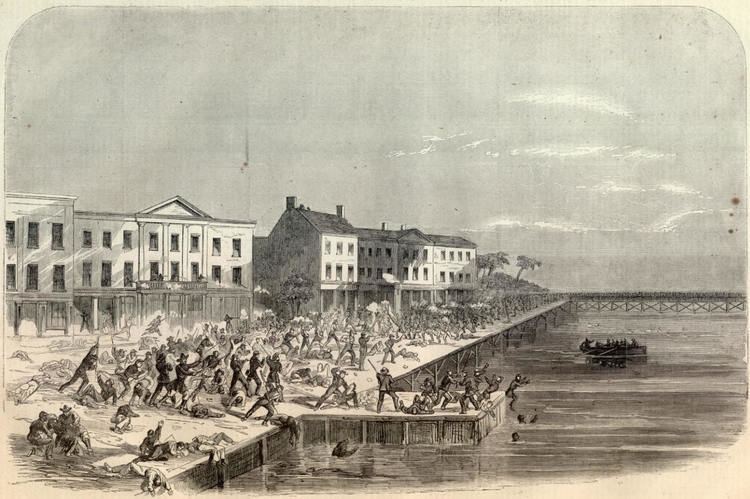ca. 400 captured1 gunboat captured1 gunboat destroyed 26 killed, 117 wounded | Date 1 January 1863 | |
 | ||
6 gunboatsunknown infantry 2 gunboatsunknown infantry Similar American Civil War, Second Battle of Sabine P, Battle of Palmito Ranch, Battle of Brownsville, First Battle of Sabine Pass | ||
Battle of galveston
The Battle of Galveston was a naval and land battle of the American Civil War, when Confederate forces under Maj. Gen. John B. Magruder expelled occupying Union troops from the city of Galveston, Texas on January 1, 1863.
Contents
After the loss of the cutter Harriet Lane, the Union Fleet Commander William B. Renshaw blew up the stranded vessel USS Westfield to save it from falling into enemy hands. Union troops on shore thought the fleet was surrendering, and laid down their arms.

The battle is sometimes called the Second Battle of Galveston, as the Battle of Galveston Harbor (October 1862) is sometimes called the First Battle of Galveston.

Battle

Two Confederate cottonclads, The CS Bayou City and the CS Neptune, sailed from Houston to Galveston in an effort to engage the Union Fleet in Galveston Harbor consisting of USS Clifton, USS Harriet Lane, USS Westfield, USS Owasco, USS Corypheus and USS Sachem. Outnumbered six to two by the Northern ships, the Neptune was severely damaged by the Union Fleet and eventually sank. While the Neptune was quickly disabled, the Bayou City succeeded in capturing the USS Harriet Lane.

During this time, the USS Westfield was grounded on a sandbar. A three-hour truce was called for by Magruder, but Union Fleet Commander William B. Renshaw, ignoring the negotiation offer, attempted to destroy the grounded Westfield with explosives rather than let it fall into enemy hands.

Renshaw and several Union troops were subsequently killed when the explosives were set off too early. Union troops on shore were convinced that their own ships were surrendering and, therefore, laid down their arms. The remaining U.S. ships did not surrender and succeeded in retreating to Union-controlled New Orleans.
Aftermath
The Union blockade around the city of Galveston was lifted temporarily for four days, and Galveston remained the only major port that remained in Confederate hands at the end of the war. The Confederate Congress stated this on the successful recapture of Galveston:
The bold, intrepid, and gallant conduct of Maj. Gen. J. Bankhead Magruder, Col. Thomas Green, Maj. Leon Smith and other officers, and of the Texan Rangers and soldiers engaged in the attack on, and victory achieved over, the land and naval forces of the enemy at Galveston, on the 1st of January, 1863, eminently entitle them to the thanks of Congress and the country... This brilliant achievement, resulting, under the providence of God, in the capture of the war steamer Harriet Lane and the defeat and ignominious flight of the hostile fleet from the harbor, the recapture of the city and the raising of the blockade of the port of Galveston, signally evinces that superior force may be overcome by skillful conception and daring courage.